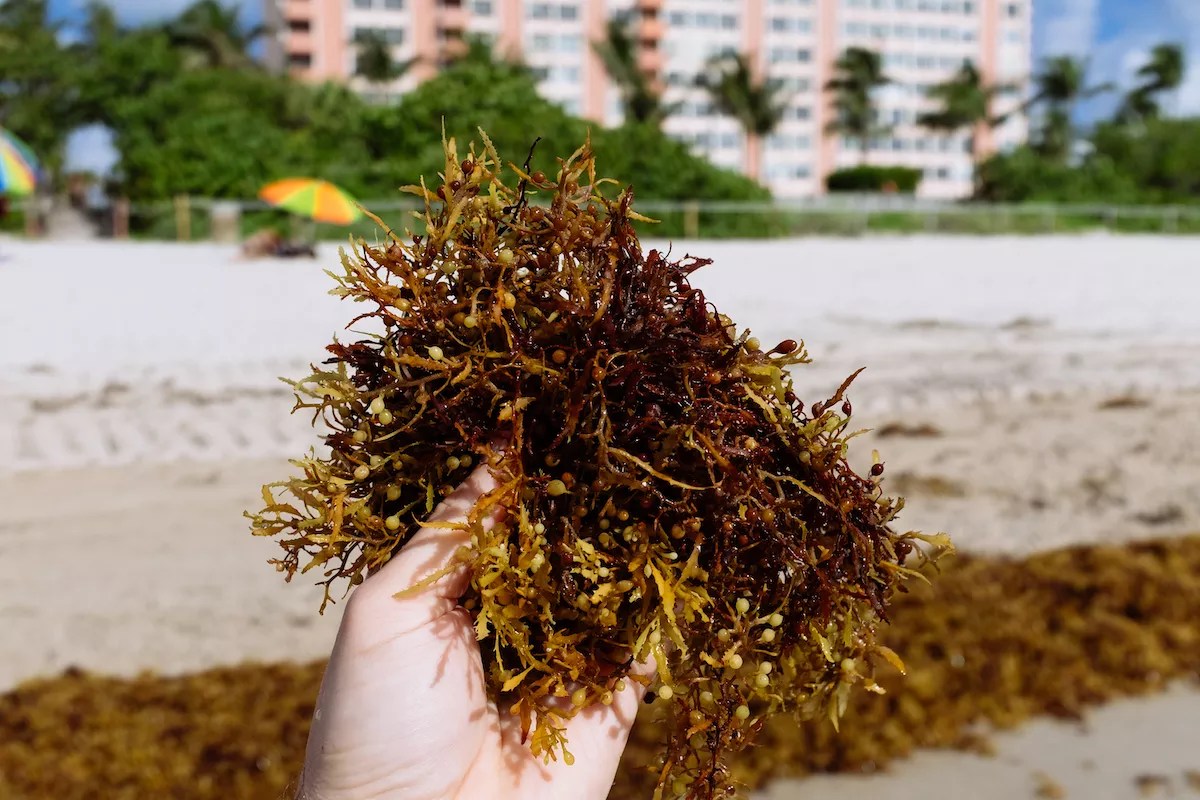
John Peabody / Getty Images

Audio By Carbonatix
As the planet heats up, the water surrounding Miami Beach is becoming warmer. And as temperatures rise, the Atlantic Ocean has turned into the perfect breeding ground for sargassum seaweed, a type of floating algae that’s now invaded coastlines in South Florida and the Caribbean.
While sargassum occurs naturally and can provide a safe habitat for marine life such as sea turtles, too much of the seaweed can be destructive. It can trap turtle hatchlings and block sunlight from coral reefs. It can aggravate asthma and irritate people’s skin. And the bacteria-filled seaweed emits a horrible smell that repels beachfront residents and tourists.
“It’s so bad that a friend of mine was staying at the Edition, and she had to leave the hotel,” Kristen Rosen Gonzalez, a former Miami Beach commissioner now running for her old seat, said this morning at a public meeting about the seaweed. “She said that the smell, it just permeates the hallways. It’s inside of people’s apartments. I mean, they’re living and breathing the seaweed. And now that I understand the bacterial component, this is as serious a public health crisis as Zika, so maybe we need to get some emergency help and funding.”
The meeting, which took place in front of Miami Beach’s Neighborhood/Community Affairs Committee, brought together city commissioners and Miami-Dade officials to discuss possible solutions to the problem. But getting rid of the seaweed can be expensive or harmful to wildlife. Maria Nardi, director of the county’s parks department, gave a presentation showing that even partial removal of the seaweed along the county’s 15 miles of beaches could cost $35 million the first year. Complete daily removal of the sargassum could run up to $45 million per year.
This year, make your gift count –
Invest in local news that matters.
Our work is funded by readers like you who make voluntary gifts because they value our work and want to see it continue. Make a contribution today to help us reach our $30,000 goal!
Nardi added that using tractors to remove the seaweed “turns the entire beach into an industrial site.”
“It’s a solution and it’s an option, but it’s not an easy one to swallow,” she said.
Despite the expense and logistical issues with removing the seaweed, most residents who live along the beach told commissioners they want the sargassum gone. “It’s decaying material,” one woman said. “We don’t leave decaying material out in a First-World country. That’s not how we handle things. That’s not a solution.”
Others brought up the possible implications for the local economy. “Most hotels and traveling blogs are flagging Miami Beach – at least our stretch of Miami Beach – as a beach to avoid,” another speaker said. “It’s gonna take years to overcome that.”
Anamarie Ferreira de Melo, president of the Mid-Beach Neighborhood Association, expressed concern about reports the seaweed was making beachgoers sick. “Numerous children that we have documented have needed nebulizers or needed to go see their specialist because asthma… or respiratory distress… is flaring up. And so we do feel the health impacts.”
Samir Elmir, the county’s director of environmental health, said the sargassum itself shouldn’t cause infections, although the seaweed can become a habitat for critters.
“I think the organisms that hide inside the seaweed on the beach, they may cause these problems,” he explained. “They do harbor microbes. They do harbor bacteria.”
Rachel Silverstein, director of the Miami Waterkeeper, says her organization has been monitoring high levels of bacteria in the water at some local beaches. Although it’s unclear if the bacteria is directly related to the seaweed, many of the places with high levels are also experiencing an influx of sargassum.
“To be on the safe side, where we’re seeing high bacteria levels, we’re recommending people don’t swim there,” Silverstein says. (Beachgoers can see the Waterkeeper’s test results on the Swim Guide website or app.)
Today’s meeting ended with no real solution, although Miami Beach commissioners passed a resolution to work with the county to find ways to address seaweed “hot spots” along the shoreline. City Manager Jimmy Morales also said he supported exploring a pilot program to address the seaweed by the end of the year.
“This is one of those very difficult issues that I think there is a long-term solution to this,” he said. “We do need to plan for it going forward.”